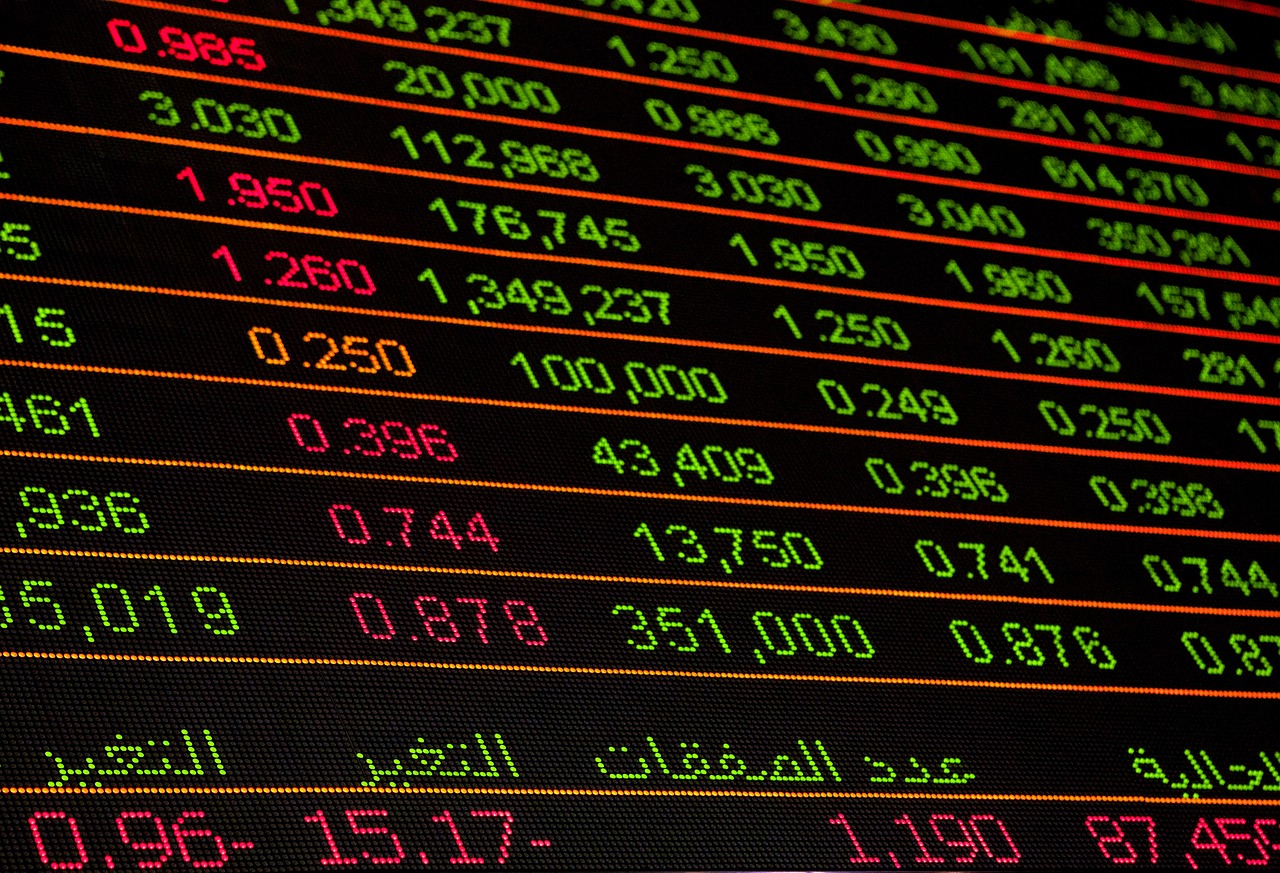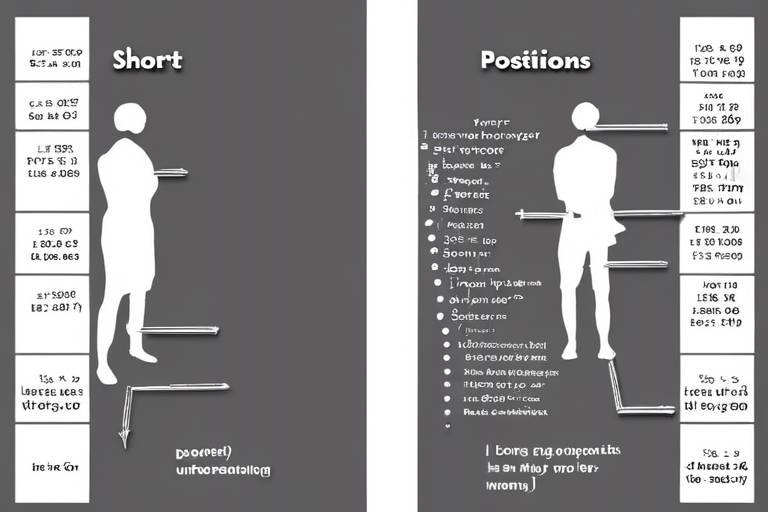How to Identify Support and Resistance Levels in Crypto
In the fast-paced world of cryptocurrency trading, the ability to identify support and resistance levels is not just a skill; it's an essential part of a trader's toolkit. Imagine you’re surfing on a wave; if you can spot the right moments to ride up or down, you’ll catch the best waves and avoid wipeouts. Similarly, understanding these levels can help traders navigate the volatile waters of the crypto market, making informed decisions that can lead to significant profits or, at the very least, minimized losses.
Support levels are like the safety nets beneath a tightrope walker. They are the price points at which a cryptocurrency tends to stop falling and often bounces back up. For traders, recognizing these levels is crucial because it presents an opportunity to buy at advantageous prices. Imagine a cryptocurrency that has been on a downward trend. As it approaches a support level, savvy traders might see this as a signal to buy, anticipating that the price will rebound. The key here is to not just guess where these levels might be, but to understand the tools and indicators that can help pinpoint them accurately.
On the flip side, we have resistance levels, which are like the ceilings that keep a balloon from rising indefinitely. These are price points where a cryptocurrency struggles to rise above, creating a barrier that traders need to be aware of. Identifying these levels is essential for determining when to sell or take profits. If a cryptocurrency has repeatedly hit a resistance level but failed to break through, it’s likely that many traders are waiting to sell at that price, creating a crowded exit. Knowing these levels can help you time your trades better, ensuring you maximize your potential gains.
Support levels are critical in the trading landscape. When the price of a cryptocurrency drops to a support level, it often indicates that there are enough buyers willing to purchase the asset at that price, preventing it from falling further. This behavior can be attributed to several factors, including market sentiment, historical price action, and external news events. For instance, if Bitcoin has historically bounced back from the $30,000 mark, traders will watch this level closely, as it may provide a buying opportunity.
Resistance levels, much like support levels, are formed by the collective actions of traders. When a cryptocurrency reaches a resistance level, it signifies that sellers are stepping in to take profits, causing the price to stall or reverse. This creates a psychological barrier for traders, leading to increased caution around buying. For example, if Ethereum has struggled to break above $2,000 multiple times, it becomes a significant resistance level that traders will monitor closely. Understanding where these levels lie can help traders make more strategic decisions about when to enter or exit positions.
To effectively identify support levels, traders can utilize various indicators that have proven to enhance their trading strategies. Two of the most popular tools are moving averages and trend lines. Moving averages smooth out price data over a specific period, allowing traders to see the overall trend and potential support points. For instance, a 50-day moving average can serve as a dynamic support level, adjusting as prices change.
Moving averages are like a compass for traders, guiding them through the often turbulent seas of cryptocurrency prices. By averaging the price over a set period, traders can identify a trend that might not be visible through daily price fluctuations. When the current price approaches the moving average from above, it can act as a support level, suggesting a potential bounce.
Drawing trend lines on price charts is another effective way to visualize support levels. By connecting the lows of a cryptocurrency's price movement, traders can create a line that indicates where the price has historically bounced back. This visual representation can be a powerful tool, as it allows traders to see patterns that might indicate future behavior.
Just as there are indicators for support, there are also several tools that can help traders identify resistance levels. Understanding these indicators is crucial for strategic trading decisions.
Fibonacci retracement levels are a popular tool among traders for predicting potential resistance points based on historical price movements. These levels are derived from a mathematical sequence and can indicate where the price might reverse after a pullback. By plotting these levels on a chart, traders can anticipate where the price may struggle to break through, allowing them to make informed decisions about selling or taking profits.
Another valuable indicator is the volume profile, which analyzes where significant trading activity has occurred. This analysis can reveal potential resistance levels, as high volume at a certain price point often indicates strong selling interest. Understanding the volume profile can provide traders with insights into market sentiment and potential price movements.
Applying support and resistance levels in trading strategies can significantly enhance decision-making. By integrating these concepts into their trading plans, traders can optimize their trades and manage risks more effectively.
Traders can use identified support and resistance levels to set precise entry and exit points. For example, if a trader identifies a strong support level, they might decide to enter a buy order just above that level, anticipating a bounce. Conversely, if they spot a resistance level, they may set a sell order just below it, maximizing their potential profits. This strategic approach can help minimize risks and improve overall trading outcomes.
Incorporating support and resistance levels into risk management strategies is crucial for protecting investments. By determining stop-loss orders just below support levels and setting profit targets near resistance levels, traders can create a safety net that helps them navigate the unpredictable nature of the crypto market. This proactive approach allows traders to manage their risks effectively while taking advantage of potential opportunities.
- What are support and resistance levels? Support levels are price points where an asset tends to stop falling, while resistance levels are points where it struggles to rise above.
- How can I identify support and resistance levels? You can identify them using tools like moving averages, trend lines, Fibonacci retracement levels, and volume profiles.
- Why are support and resistance levels important? They help traders make informed decisions about when to buy or sell, optimizing their trading strategies and managing risks.

Understanding Support Levels
Support levels are like safety nets in the world of cryptocurrency trading. Imagine you're on a roller coaster, and as you plunge down, there’s a point where you feel a little bump before the ride starts to go back up. That’s essentially what a support level does for a cryptocurrency's price. It’s a price point where the selling pressure is overcome by buying pressure, causing the price to stabilize or bounce back up. Recognizing these levels is crucial for traders looking to buy at advantageous prices, as they indicate where a cryptocurrency might find its footing before making another move.
To truly grasp the concept of support levels, think of them as the floor of a room. Just as you wouldn’t expect to fall through the floor, traders rely on support levels to prevent prices from dropping further. When a cryptocurrency approaches a support level, it often attracts buyers who see this as a great opportunity to purchase at a lower price. This dynamic creates a psychological barrier, making it less likely for the price to fall below that level.
Identifying support levels can be done through various methods, but one of the most effective ways is by looking at historical price data. Just like how a detective examines past clues to solve a mystery, traders analyze previous price movements to pinpoint where support has been established. Here are some common techniques used to identify these levels:
- Historical Price Points: Look at past price movements to find areas where the price has bounced back up repeatedly.
- Moving Averages: These can help smooth out price fluctuations and reveal underlying trends.
- Trend Lines: Drawing lines on a price chart can visually indicate where support levels might exist.
Incorporating these techniques into your trading strategy can significantly improve your ability to identify support levels. For instance, if you notice that a cryptocurrency has bounced off a particular price point multiple times in the past, it’s likely that this level will act as support again in the future. As a trader, you want to take advantage of these patterns, as they can lead to profitable buying opportunities.
Moreover, understanding support levels isn’t just about recognizing where prices might stop falling; it’s also about timing your trades effectively. For example, if you see that a cryptocurrency is approaching a known support level, you might consider placing a buy order just above this level. This strategy can help you catch the upward momentum as the price bounces back, allowing you to capitalize on potential gains.
In summary, identifying support levels is a fundamental skill for any cryptocurrency trader. By understanding where these levels lie, you can make informed decisions that enhance your trading strategy. Remember, the crypto market is notoriously volatile, and having a solid grasp of support levels can be the difference between a successful trade and a missed opportunity.

Understanding Resistance Levels
Resistance levels are like invisible walls in the world of cryptocurrency trading. They represent price points where a cryptocurrency has historically struggled to rise above. Imagine trying to push a balloon underwater; at some point, the pressure builds up, and the balloon pops back up. Similarly, when the price of a cryptocurrency approaches a resistance level, it often faces selling pressure that can cause it to retract. This phenomenon is crucial for traders to understand, as it can make the difference between a profitable trade and a costly mistake.
Identifying resistance levels is essential for anyone looking to maximize their gains in the volatile crypto market. When prices approach these levels, traders can assess whether to hold onto their assets or take profits. But how do you spot these resistance levels? There are several key indicators and tools that traders can use to identify where these pressure points lie. For example, chart patterns, moving averages, and volume can all provide valuable insights into potential resistance levels.
One of the most effective ways to visualize resistance is through the use of Fibonacci retracement levels. This tool is based on the Fibonacci sequence, a series of numbers where each number is the sum of the two preceding ones. Traders use these levels to identify potential reversal points, as historical price movements often adhere to these mathematical relationships. By plotting Fibonacci retracement levels on a price chart, traders can predict where prices might struggle to break through.
Another useful indicator is the volume profile. This analysis reveals where significant trading activity has occurred at various price levels. If a particular price point has seen a lot of buying and selling, it may indicate a strong resistance level where traders are likely to sell their assets. By keeping an eye on these volume spikes, traders can better anticipate when the price might hit a wall.
In summary, understanding resistance levels is a fundamental aspect of cryptocurrency trading. By recognizing these price points, traders can make informed decisions about when to sell or take profits. It's all about timing and knowing when to act. So, the next time you're analyzing a cryptocurrency chart, remember to look for those resistance levels—they could be your ticket to maximizing your trading success!
- What is a resistance level? Resistance levels are price points where a cryptocurrency tends to struggle to rise above, often leading to price retractions.
- How can I identify resistance levels? Traders can identify resistance levels using various tools such as Fibonacci retracement levels, moving averages, and volume profiles.
- Why are resistance levels important? Recognizing resistance levels helps traders make informed decisions about when to sell or take profits, maximizing potential gains.

Key Indicators for Support
When diving into the world of cryptocurrency trading, understanding support levels is crucial for making informed decisions. Support levels are like the safety nets of the trading world; they are price points where a cryptocurrency tends to stop falling and may bounce back up. But how do you identify these elusive levels? Well, there are several key indicators that can assist you in this quest.
One of the most popular indicators is the moving average. This tool smooths out price data by creating an average price over a specific period, making it easier to identify trends. For instance, if you're looking at a 50-day moving average, it will help you see the average price over the last 50 days, which can act as a support level during price declines. When prices approach this moving average, traders often see it as a potential buying opportunity, as it has historically provided a cushion against further declines.
Another effective method is to draw trend lines on your price charts. By connecting the lows of the price movements, you can visually highlight where support levels have formed in the past. This technique not only aids in identifying current support levels but also helps you predict future price movements. Imagine drawing a line that connects the bottoms of price dips; that line can serve as a guide for where the price might bounce back up again.
Additionally, using historical price data can provide invaluable insights. By analyzing past price movements, you can identify areas where the price has previously reversed direction. For instance, if a cryptocurrency has bounced back from a specific price point multiple times, that price point is likely to act as a support level in the future. This historical context is essential for trading strategies.
Lastly, it's important to consider the volume of trades at various price levels. High trading volume at a certain price point can indicate strong support. When many traders are willing to buy at that level, it creates a barrier against further price drops. Therefore, monitoring trading volume alongside price movements can enhance your understanding of potential support levels.
In summary, recognizing support levels is not just about spotting price points; it's about utilizing various indicators effectively. By combining moving averages, trend lines, historical price data, and trading volume analysis, you can enhance your trading strategy and make more informed decisions. Remember, the crypto market is volatile, and having these tools in your trading arsenal can be the difference between a successful trade and a missed opportunity.

Moving Averages
Moving averages are a popular tool among traders, especially in the cryptocurrency market, where price fluctuations can be as unpredictable as a roller coaster ride. By smoothing out price data over a specified period, moving averages help traders identify the underlying trend, making it easier to spot potential support levels. Think of moving averages as a safety net; they provide a clearer picture of where a cryptocurrency has been, allowing traders to make more informed decisions about where it might be headed next.
There are two main types of moving averages that traders typically use: the Simple Moving Average (SMA) and the Exponential Moving Average (EMA). Each has its unique characteristics and advantages. The SMA calculates the average price over a specific number of days, providing a straightforward view of the trend. On the other hand, the EMA gives more weight to recent prices, making it more responsive to price changes. This responsiveness can be particularly beneficial in the fast-paced world of crypto trading, where every second counts.
To illustrate the differences between these two types of moving averages, let’s take a look at a simple comparison table:
| Type of Moving Average | Calculation Method | Responsiveness |
|---|---|---|
| Simple Moving Average (SMA) | Average of prices over a set period | Less responsive to recent price changes |
| Exponential Moving Average (EMA) | Weighted average that gives more importance to recent prices | More responsive to recent price changes |
Utilizing moving averages effectively can significantly enhance your trading strategy. For instance, when the price of a cryptocurrency consistently stays above its moving average, it might indicate a bullish trend, suggesting that it could be a good time to buy. Conversely, if the price dips below the moving average, it could signal a bearish trend, prompting traders to consider selling or shorting the asset. This dynamic allows traders to adjust their strategies based on real-time market conditions, ultimately leading to more informed trading decisions.
Incorporating moving averages into your trading toolkit isn't just about understanding how they work; it’s also about knowing when to use them. For example, many traders look for crossovers between different moving averages as a trading signal. A common strategy is to watch for the crossover of a shorter-term EMA over a longer-term SMA, which may indicate a potential uptrend. This crossover can serve as a powerful signal to enter a trade, while the opposite scenario—where the shorter-term EMA crosses below the longer-term SMA—might suggest a good time to exit or sell.
In conclusion, moving averages are more than just numbers on a chart; they are powerful indicators that can help you navigate the tumultuous waters of cryptocurrency trading. By understanding how to interpret these averages, you can make more strategic decisions, whether you're looking to buy low or sell high. So, the next time you're analyzing a cryptocurrency, remember to keep an eye on those moving averages—they might just be the key to unlocking your trading potential.
Frequently Asked Questions
- What is the best moving average to use for cryptocurrency trading? It depends on your trading strategy. Shorter-term moving averages like the 10-day EMA are great for quick trades, while longer-term averages like the 50-day SMA can help identify broader trends.
- Can moving averages predict price movements? While moving averages are helpful in identifying trends, they do not predict prices. They are best used in conjunction with other indicators and analysis methods.
- How often should I update my moving averages? It’s generally a good practice to update your moving averages regularly, especially in the volatile crypto market. Daily updates can provide the most accurate insight.

Trend Lines
Trend lines are like the invisible threads that connect the dots on a price chart, helping traders visualize the path of a cryptocurrency's price movement. Imagine you're walking through a forest, and the trail keeps winding in different directions; trend lines serve as your compass, guiding you through the often chaotic landscape of crypto trading. By drawing straight lines that connect the lows in an upward trend or the highs in a downward trend, traders can identify the general direction of the market. This can be incredibly valuable when making decisions about when to buy or sell.
To create an effective trend line, you need to connect at least two significant price points. The more points you connect, the stronger the trend line becomes. This is because a trend line that has been touched multiple times indicates a level of support or resistance that traders are paying attention to. When prices approach these lines, they often react—either bouncing off or breaking through. This reaction can provide crucial insights into future price movements.
Here's a quick breakdown of how to effectively use trend lines in your trading strategy:
- Identify the Trend: Start by determining whether the market is in an uptrend, downtrend, or sideways movement. This sets the stage for your analysis.
- Draw the Line: For an uptrend, connect the lows; for a downtrend, connect the highs. Ensure the line touches at least two points.
- Monitor Price Action: Watch how the price reacts when it approaches the trend line. A bounce off the line may indicate a buying opportunity, while a break could suggest a potential reversal.
One of the most exciting aspects of trend lines is their ability to adapt to changing market conditions. As new price data comes in, you may need to adjust your lines to reflect the current trend. This dynamic nature keeps you on your toes and encourages you to stay engaged with the market. Additionally, combining trend lines with other indicators, such as moving averages or volume analysis, can provide a more comprehensive view of market conditions.
In summary, trend lines are not just lines on a chart; they are powerful tools that can help you navigate the unpredictable waters of cryptocurrency trading. By understanding how to draw and interpret these lines, you can enhance your trading strategy, make more informed decisions, and potentially increase your profitability. So, the next time you look at a price chart, remember to draw those lines and see where they lead you!
Q: How do I know if a trend line is valid?
A: A trend line is considered valid if it connects at least two significant price points. The more times the price touches the line without breaking it, the stronger the trend line is.
Q: Can I use trend lines in any market?
A: Yes, trend lines can be applied to any financial market, including stocks, forex, and cryptocurrencies. They are a versatile tool for technical analysis.
Q: How do I combine trend lines with other indicators?
A: You can use trend lines alongside indicators like moving averages, RSI, or MACD to confirm signals. For instance, if a price approaches a trend line and the RSI indicates overbought conditions, it may suggest a potential reversal.
Q: What should I do if the price breaks through a trend line?
A: A break through a trend line can indicate a change in market sentiment. It's essential to reassess your trading strategy and consider setting stop-loss orders to manage risk.

Key Indicators for Resistance
When diving into the world of cryptocurrency trading, understanding resistance levels is just as critical as grasping support levels. Resistance levels act like invisible ceilings that prevent prices from rising beyond a certain point. Identifying these levels can significantly enhance your trading strategy, allowing you to make informed decisions about when to sell or take profits. But how do you pinpoint these elusive resistance levels? Let’s explore some key indicators that can help you in this endeavor.
One of the most popular tools for identifying resistance levels is the Fibonacci retracement levels. This method is based on the Fibonacci sequence, a series of numbers where each number is the sum of the two preceding ones. Traders use these levels to predict potential reversal points in the market. By plotting Fibonacci retracement levels on a price chart, you can visually identify areas where the price might struggle to break through. For instance, if a cryptocurrency has recently surged, the 38.2%, 50%, and 61.8% retracement levels can serve as potential resistance points where traders might decide to sell.
Another powerful indicator is the volume profile. This tool analyzes the volume of trades at various price levels, helping traders understand where significant trading activity has occurred. High trading volume at a particular price point often signals a resistance level. If the price approaches this level again, it may struggle to break through due to the large number of sellers at that price. By observing the volume profile, you can gain insights into market sentiment and make better trading decisions.
Moreover, combining these indicators can yield even better results. For example, if the price of a cryptocurrency approaches a Fibonacci retracement level and coincides with a high volume area, the chances of that level acting as a resistance increase significantly. This intersection of indicators creates a more robust trading signal, making it easier to decide when to enter or exit a trade.
In summary, identifying resistance levels is vital for successful trading in the crypto market. By utilizing tools like Fibonacci retracement levels and volume profiles, you can enhance your ability to anticipate market movements. Remember, the key is not just to rely on one indicator but to look for confluence between multiple signals to make informed trading decisions.
- What are support and resistance levels?
Support levels are price points where a cryptocurrency tends to stop falling, while resistance levels are where it struggles to rise above. - How can I identify resistance levels?
You can identify resistance levels using tools like Fibonacci retracement levels and volume profile analysis. - Why are resistance levels important in trading?
Resistance levels help traders determine optimal points to sell or take profits, maximizing potential gains. - Can I use multiple indicators together?
Absolutely! Using multiple indicators in conjunction can provide stronger signals for trading decisions.

Fibonacci Retracement Levels
Fibonacci retracement levels are a powerful tool in the arsenal of cryptocurrency traders, acting like a compass in the turbulent waters of the crypto market. These levels are derived from the Fibonacci sequence, a mathematical concept that appears in various aspects of nature and art. When applied to trading, they help identify potential reversal points in the price of a cryptocurrency. Essentially, traders use these levels to predict where the price might pull back before continuing its trend, whether that’s upward or downward.
To understand how Fibonacci retracement levels work, let’s break it down into a simple analogy. Imagine you’re climbing a steep mountain (the price of a cryptocurrency). As you ascend, you might need to take a breather at certain intervals before continuing your climb. These intervals are akin to the Fibonacci levels. When the price of a cryptocurrency rises, it often retraces to one of these specific levels before continuing its upward journey. The most commonly used Fibonacci retracement levels are 23.6%, 38.2%, 50%, 61.8%, and 100%. Each of these percentages represents a potential support or resistance level where traders can expect price action to pause or reverse.
Here’s a quick overview of how these levels are typically used:
- 23.6%: This level is often seen as a minor retracement, indicating a small pullback before the trend continues.
- 38.2%: A more significant retracement level, where traders might start to look for buying opportunities if the price holds.
- 50%: Although not a Fibonacci number, the 50% retracement is widely recognized and often acts as a psychological barrier.
- 61.8%: Known as the "golden ratio," this level is crucial for many traders, as strong reversals often occur here.
- 100%: This level signifies a complete retracement, where the price returns to its original starting point.
Traders can draw these levels on their charts by identifying a recent high and low point in the price movement. Once these points are established, the Fibonacci retracement tool will automatically calculate and display the key levels on the chart. This visual representation allows traders to quickly assess where the price might bounce back or face resistance.
Moreover, combining Fibonacci retracement levels with other technical indicators can enhance their effectiveness. For instance, if a Fibonacci level coincides with a moving average or a previous support/resistance level, it creates a stronger signal for traders. This confluence of indicators can provide added confidence when making trading decisions.
In summary, Fibonacci retracement levels serve as vital checkpoints in the unpredictable landscape of cryptocurrency trading. By understanding and applying these levels, traders can improve their chances of making informed decisions, ultimately leading to better trading outcomes.
- What are Fibonacci retracement levels?
They are horizontal lines that indicate potential support and resistance levels based on the Fibonacci sequence.
- How do I use Fibonacci retracement levels in trading?
Identify a recent high and low on your chart, apply the Fibonacci tool, and look for price action around the calculated levels.
- Can Fibonacci levels guarantee price reversals?
No, they are not guarantees, but they provide potential areas where reversals may occur based on historical price behavior.

Volume Profile
The is an essential tool for traders, especially in the fast-paced world of cryptocurrencies. It provides a visual representation of trading activity over a specified time period at specific price levels. This means that instead of just looking at price changes, you can see where the most trading volume has occurred. Imagine standing at a bustling market where certain stalls are crowded while others are empty; similarly, the Volume Profile shows you where traders are most active, which can indicate potential resistance and support levels.
Understanding the Volume Profile is akin to having a map that highlights the busiest paths in a city. By analyzing this data, traders can identify price levels where buyers and sellers have historically engaged in significant transactions. These levels can act as crucial indicators for future price movements. For instance, if a cryptocurrency consistently experiences high trading volume at a particular price point, it suggests that many traders consider that level significant. Thus, if the price approaches this level again, it might either bounce back (support) or struggle to break through (resistance).
To illustrate how Volume Profile works, consider the following table:
| Price Level | Volume Traded | Significance |
|---|---|---|
| $20,000 | 1500 BTC | Strong Support |
| $25,000 | 2000 BTC | Major Resistance |
| $22,500 | 1000 BTC | Moderate Interest |
This table highlights how different price levels can attract varying volumes of trading activity. As you can see, the price level of $25,000 has the highest trading volume, suggesting it may act as a strong resistance level. Conversely, the $20,000 mark shows significant support, indicating that traders are likely to buy at this price.
Using Volume Profile in conjunction with other indicators, such as Moving Averages and Fibonacci Retracement Levels, can provide a more comprehensive view of market dynamics. By combining these tools, traders can enhance their decision-making process, making it easier to identify entry and exit points while managing risks effectively. Remember, the key to successful trading lies not just in understanding price movements but also in grasping the underlying volume trends that drive those movements.
- What is Volume Profile?
Volume Profile is a charting tool that shows the amount of trading activity at different price levels over a specified time period. - How can Volume Profile help in trading?
It helps traders identify significant support and resistance levels, allowing for better entry and exit points in trades. - Is Volume Profile suitable for all types of trading?
Yes, it can be beneficial for day trading, swing trading, and long-term investing in various markets, including cryptocurrencies.

Practical Application of Support and Resistance
Understanding how to apply support and resistance levels in your trading strategy is crucial for navigating the often turbulent waters of the cryptocurrency market. Think of these levels as your compass; they guide you through the stormy seas of price fluctuations, helping you make informed decisions. By effectively utilizing support and resistance, you can enhance your trading outcomes and minimize risks. So, how can you incorporate these concepts into your trading routine?
First, let’s talk about setting entry and exit points. When you identify a strong support level, it often indicates a good opportunity to enter a trade. This is where the price has previously bounced back, suggesting that buyers are likely to step in again. Conversely, when you spot a resistance level, it’s a signal that you might want to consider taking profits or exiting your position. This is crucial because selling at resistance increases your chances of maximizing gains before the price potentially reverses.
Here’s a quick example: Imagine you’re eyeing a cryptocurrency that has repeatedly bounced off a support level at $50. You might decide to place a buy order just above this level, anticipating that it will hold again. On the flip side, if the price approaches a resistance level at $70, it might be wise to set a sell order just below this threshold, allowing you to capitalize on potential profits.
Next up is risk management. Incorporating support and resistance levels into your risk management strategy is like wearing a life jacket while sailing. It protects you from unexpected dips and spikes in the market. By determining your stop-loss orders based on these levels, you can safeguard your capital. For instance, if you enter a trade at a support level of $50, you might set a stop-loss just below this level at $48. This way, if the price breaks through support, your losses are minimized.
To illustrate this concept further, let’s take a look at a table that summarizes how to set your entry and exit points along with stop-loss levels:
| Trade Action | Price Level | Stop-Loss Level |
|---|---|---|
| Buy | $50 (Support Level) | $48 |
| Sell | $70 (Resistance Level) | $72 |
In addition to these strategies, keeping a close eye on market news and trends can also enhance your application of support and resistance. For example, if a significant news event is expected, like a regulatory announcement, it could impact price levels drastically. Being aware of such events helps you adjust your strategies accordingly, ensuring that you don’t get caught off guard.
Ultimately, mastering the practical application of support and resistance levels takes time and practice. It’s not just about spotting these levels but also understanding how they interact with the overall market dynamics. By continuously refining your approach, you can become more adept at making strategic trading decisions that align with your financial goals.
- What are support and resistance levels? Support levels are price points where a cryptocurrency tends to stop falling and may bounce back up, while resistance levels are points where the price struggles to rise above.
- How can I identify support and resistance levels? You can identify these levels using various indicators such as moving averages, trend lines, Fibonacci retracement levels, and volume profiles.
- Why are support and resistance levels important? They help traders make informed decisions on when to enter or exit trades, ultimately maximizing profits and minimizing risks.

Setting Entry and Exit Points
When it comes to trading cryptocurrencies, knowing when to jump in and when to step back can make all the difference. Think of it like surfing: you wouldn't paddle out into the ocean without checking the waves first, right? Similarly, setting your entry and exit points based on identified support and resistance levels can help you ride the waves of the crypto market more effectively. By strategically placing your trades around these levels, you can optimize your chances of success while minimizing risks.
To set your entry points, look for areas where the price has previously bounced off support levels. This is where buyers have historically stepped in, creating a safety net for your investment. For instance, if Bitcoin has repeatedly found support at $30,000, that could be a great entry point to consider. But don’t just take it at face value—always look for confirmation signals, such as bullish candlestick patterns or increased trading volume, to validate your decision.
On the flip side, exit points are equally crucial. These are the moments when you decide to cash in on your profits or cut your losses. Resistance levels are your best friends here. If you've entered a trade at a support level, monitor the resistance levels closely. If the price approaches a resistance level that has historically been tough to break through, consider taking profits or setting a stop-loss order just below that level. This way, you protect your gains while leaving room for potential upside if the price breaks through.
To illustrate this concept, let’s take a look at a simple table outlining a hypothetical trading scenario:
| Cryptocurrency | Support Level | Entry Point | Resistance Level | Exit Point |
|---|---|---|---|---|
| Bitcoin (BTC) | $30,000 | $30,200 | $35,000 | $34,800 |
| Ethereum (ETH) | $2,000 | $2,050 | $2,500 | $2,480 |
In this example, a trader might enter a Bitcoin position at $30,200 after seeing that the price has bounced off the $30,000 support level. If the price rises and approaches the $35,000 resistance level, they could set an exit point at $34,800 to secure profits before a potential pullback. This method of setting entry and exit points not only helps in maximizing profit but also plays a significant role in managing risks effectively.
Ultimately, the key to successful trading lies in your ability to adapt and respond to market conditions. By continuously monitoring support and resistance levels and adjusting your entry and exit points accordingly, you can navigate the unpredictable waters of cryptocurrency trading with greater confidence. Remember, it's all about making informed decisions and staying ahead of the game!
- What are support and resistance levels? Support levels are price points where a cryptocurrency tends to stop falling, while resistance levels are where it struggles to rise above.
- How can I identify these levels? You can use various indicators like moving averages, trend lines, Fibonacci retracement levels, and volume profiles to identify support and resistance levels.
- Why are entry and exit points important? Setting these points helps you optimize trades, maximize profits, and minimize risks in the volatile crypto market.
- Can I rely solely on support and resistance for trading decisions? While they are essential tools, it’s best to combine them with other indicators and market analysis for a more comprehensive strategy.

Risk Management Strategies
When it comes to trading cryptocurrencies, having a solid risk management strategy is not just a good idea; it's essential. The crypto market is notorious for its volatility, which can lead to significant gains but also devastating losses. Therefore, understanding how to effectively incorporate support and resistance levels into your risk management strategy can be a game-changer. Think of it as your safety net—without it, you might find yourself tumbling into the abyss of poor trading decisions.
One of the most effective ways to manage risk is by setting stop-loss orders. These are predetermined price points at which you will exit a trade to prevent further losses. By placing your stop-loss just below a support level, you can protect your investment in case the market takes a downturn. For example, if you buy Bitcoin at $30,000 and identify a support level at $29,500, setting your stop-loss at $29,400 allows you to limit your losses while giving the asset some room to fluctuate.
On the flip side, when you're looking to take profits, identifying resistance levels can be your best friend. Setting a take-profit order at or just below a resistance level ensures that you lock in profits before the price potentially reverses. For instance, if you bought Ethereum at $2,000 and notice a resistance level at $2,200, placing your take-profit order at $2,180 can help you secure gains without being greedy.
Another effective strategy is to use the risk-reward ratio to evaluate potential trades. This ratio compares the amount you stand to gain from a trade against the potential loss. A common rule of thumb is to aim for a risk-reward ratio of at least 1:2, meaning that for every dollar you risk, you should aim to make two. For example, if your stop-loss is set at $29,400 and your take-profit at $30,600, your risk-reward ratio would be 1:3, which is quite favorable.
Moreover, diversifying your portfolio can also serve as a risk management tool. By spreading your investments across multiple cryptocurrencies rather than putting all your eggs in one basket, you can mitigate the impact of a single asset's poor performance. Consider this: if Bitcoin drops sharply but your portfolio includes Ethereum, Cardano, and Solana, the losses from Bitcoin may be offset by gains in other assets.
Finally, it’s crucial to continuously monitor and adjust your strategies based on market conditions. The crypto landscape is ever-changing, and what worked yesterday may not work today. Regularly reviewing your support and resistance levels and adjusting your stop-loss and take-profit orders accordingly can help you stay ahead of the game.
- What is a stop-loss order? A stop-loss order is a predetermined price point at which you will exit a trade to limit your losses.
- How do I identify support and resistance levels? You can identify these levels through various indicators, such as moving averages, trend lines, and historical price action.
- What is a risk-reward ratio? The risk-reward ratio compares the potential profit of a trade to the potential loss, helping traders evaluate whether a trade is worth taking.
- Is it necessary to diversify my crypto portfolio? Yes, diversification can help mitigate risks by spreading investments across different assets.
Frequently Asked Questions
- What are support and resistance levels in cryptocurrency trading?
Support and resistance levels are key price points that help traders identify potential reversal areas in the market. Support levels indicate where the price tends to stop falling and may bounce back, while resistance levels show where the price struggles to rise above. Understanding these levels can significantly enhance trading strategies.
- How can I identify support levels?
You can identify support levels by using various indicators such as moving averages and trend lines. Moving averages smooth out price data over specific periods, helping you spot trends, while trend lines visually highlight areas where prices have historically bounced back. These tools can improve your trading decisions considerably.
- What are some indicators for resistance levels?
Indicators such as Fibonacci retracement levels and volume profile are essential for identifying resistance levels. Fibonacci retracement levels help predict potential resistance points based on historical price movements, while volume profile analysis reveals significant trading activity, indicating where prices may struggle to break through.
- How do I apply support and resistance in my trading strategy?
To effectively apply support and resistance levels in your trading strategy, you can set precise entry and exit points based on these identified levels. This approach helps optimize your trades and minimizes risks, especially in the volatile crypto market. Incorporating these levels into your risk management strategies can also protect your investments.
- Can support and resistance levels change over time?
Yes, support and resistance levels can change as market conditions evolve. Price movements, news events, and overall market sentiment can cause these levels to shift. Therefore, it's essential to continually analyze the market and adjust your strategies accordingly to stay ahead.



















